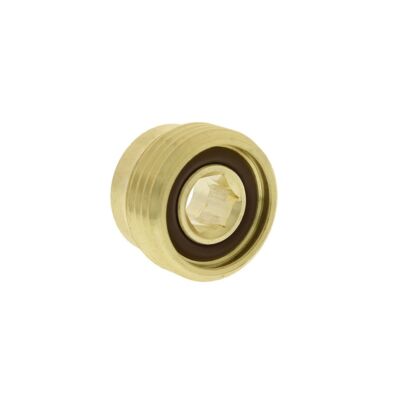Valve Insert 200-BAR DIN to Yoke, Oxygen
- Oxygen compatible and clean
- Easily converts a DIN valve opening to Yoke
- Use on 200-Bar style (Pro DIN/K) valves only
- Has 8-mm hex opening and two O-rings
- Made of oxygen clean copper metal alloy (aka "brass")
Valve Insert 200-BAR DIN to Yoke, Oxygen
$6.00
In Stock
SKU
DX-702282-O2
WE WANT TO PROPERLY SET YOUR EXPECTATIONS: The threads on these oxygen compatible valve outlet inserts are oxygen clean copper metal alloy (aka "brass") which exhibit some discoloration that is NOT aesthetically pleasing as chromed brass finishes typical of most SCUBA valves.
Use this insert to convert our DGX Premium O2 200-BAR DIN style SCUBA cylinder valve for use with any yoke style first stage regulator up to the DOT rated maximum SCUBA cylinder service pressure of 3442 psi. The DGX insert is raw brass insert without chrome plating with an 8-mm hex opening and includes two oxygen compatible 112 O-Rings.
| Brand | DGX |
|---|---|
| SKU | DX-702282-O2 |
| Weight | 0.075000 |
Customer Reviews
 WARNING
WARNING
According to our suppliers, these products are constructed with oxygen compatible materials and factory cleaned for use with compressed gases in excess of 23.5% oxygen. Nonetheless, the 'clean state' of this equipment applies only prior to initial use. Thereafter, periodic inspection and cleaning are a necessity. You must meticulously follow the recommendations of the US Department of Transportation (DOT), Compressed Gas Association (CGA), and other federal/state/local agencies, plus your dive training agency for equipment maintenance, handling, storage, labeling, filling, transport and use of compressed gases. Oxygen-related fires and explosions can result in serious injury or death. Ultimately, you must make the final decision to assume all risks associated with the use of any compressed gases, including those in excess of 23.5% oxygen.

